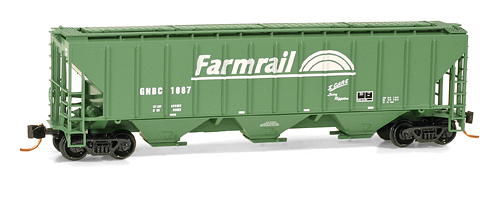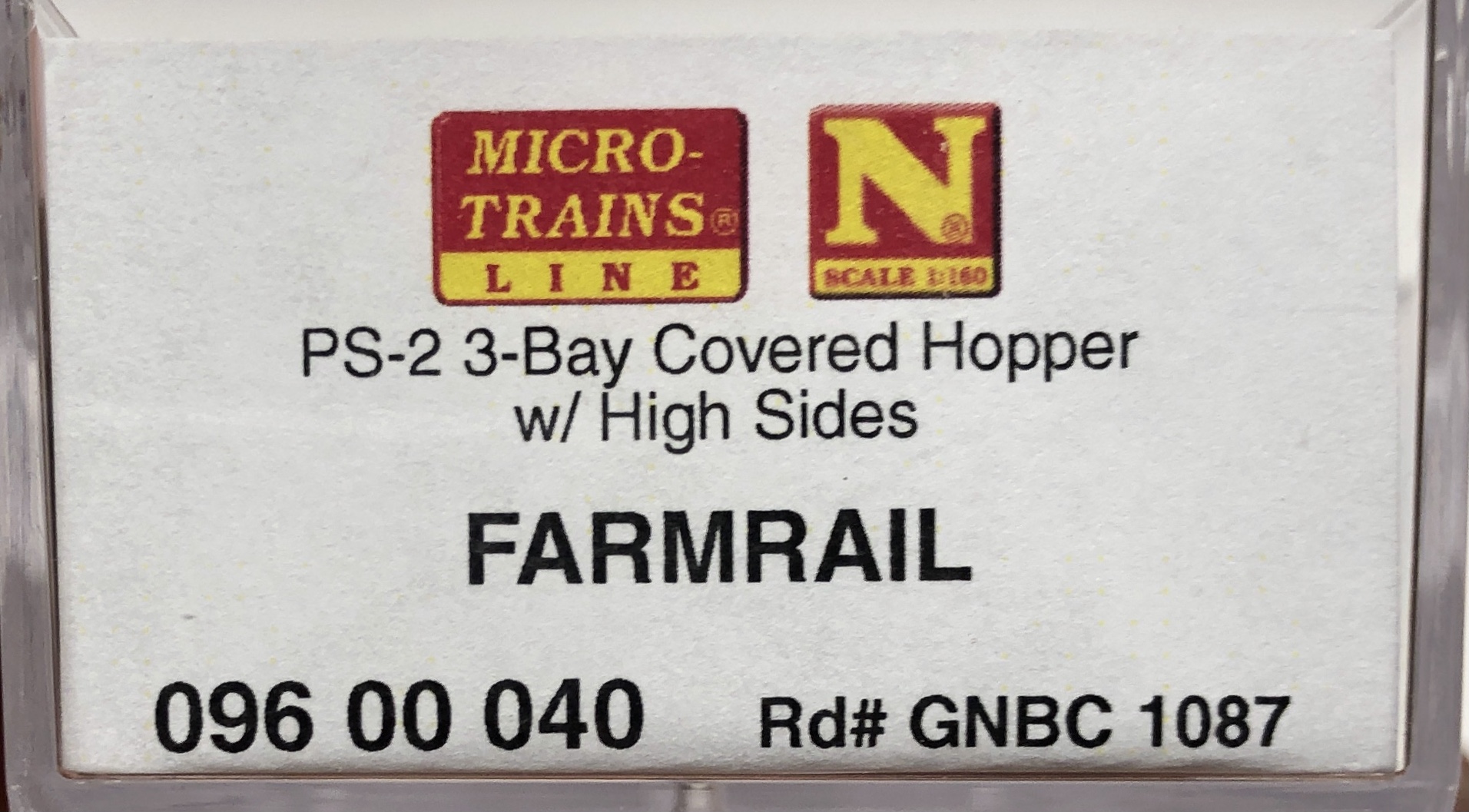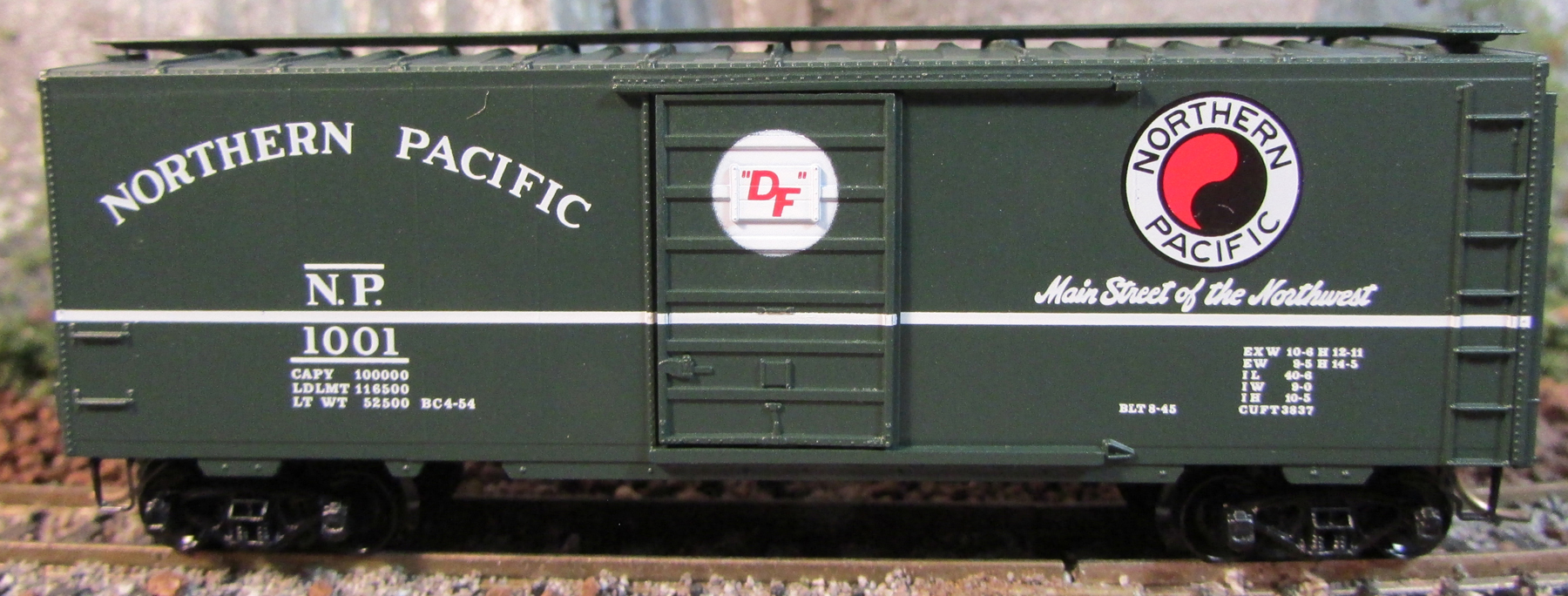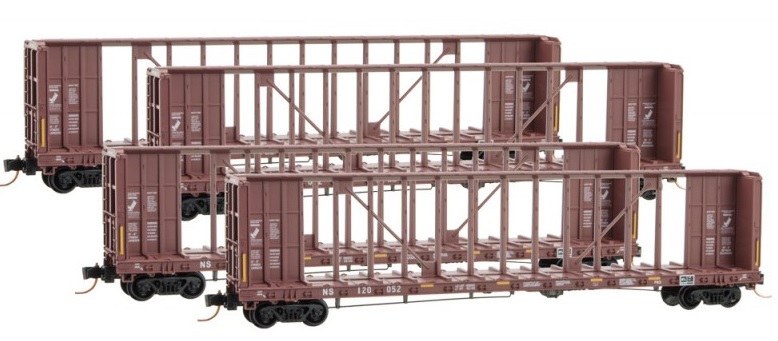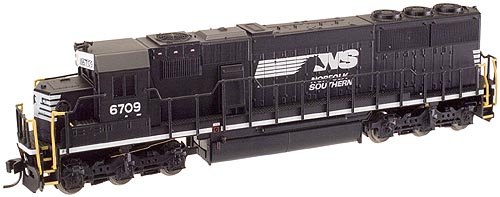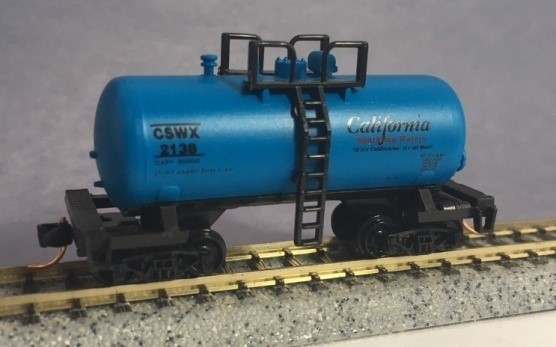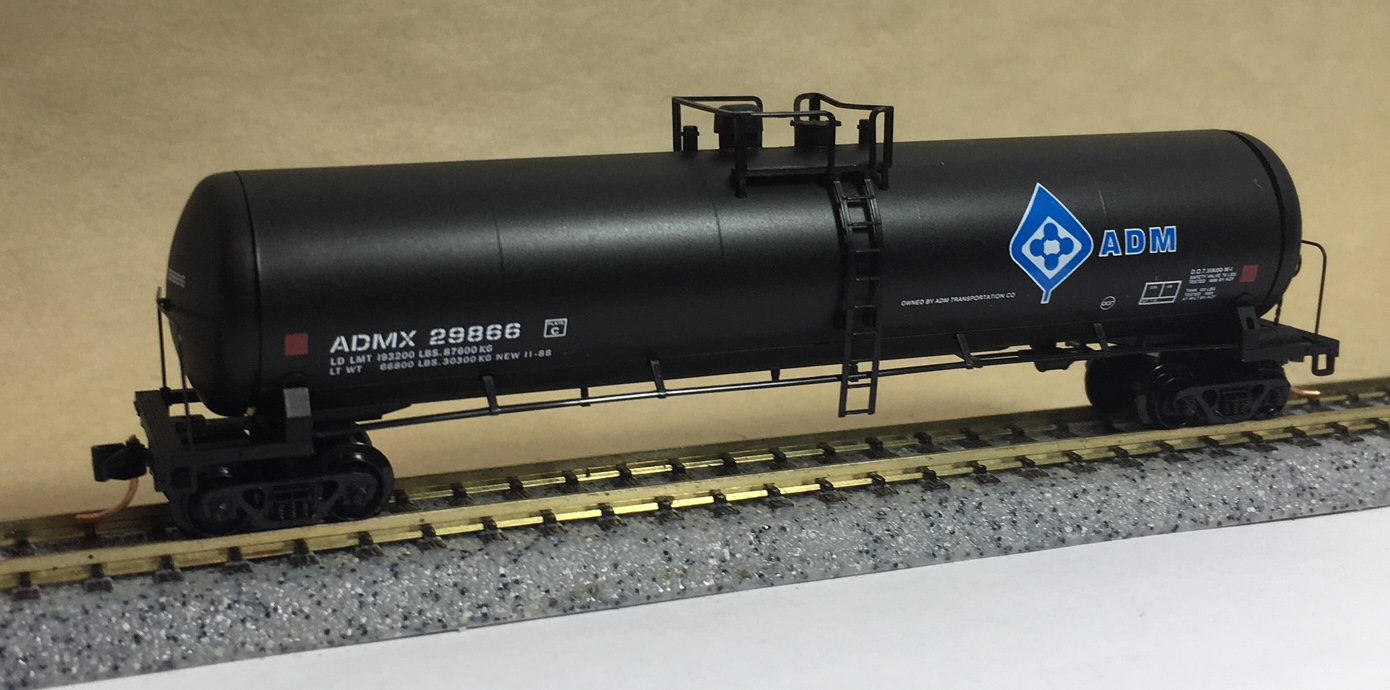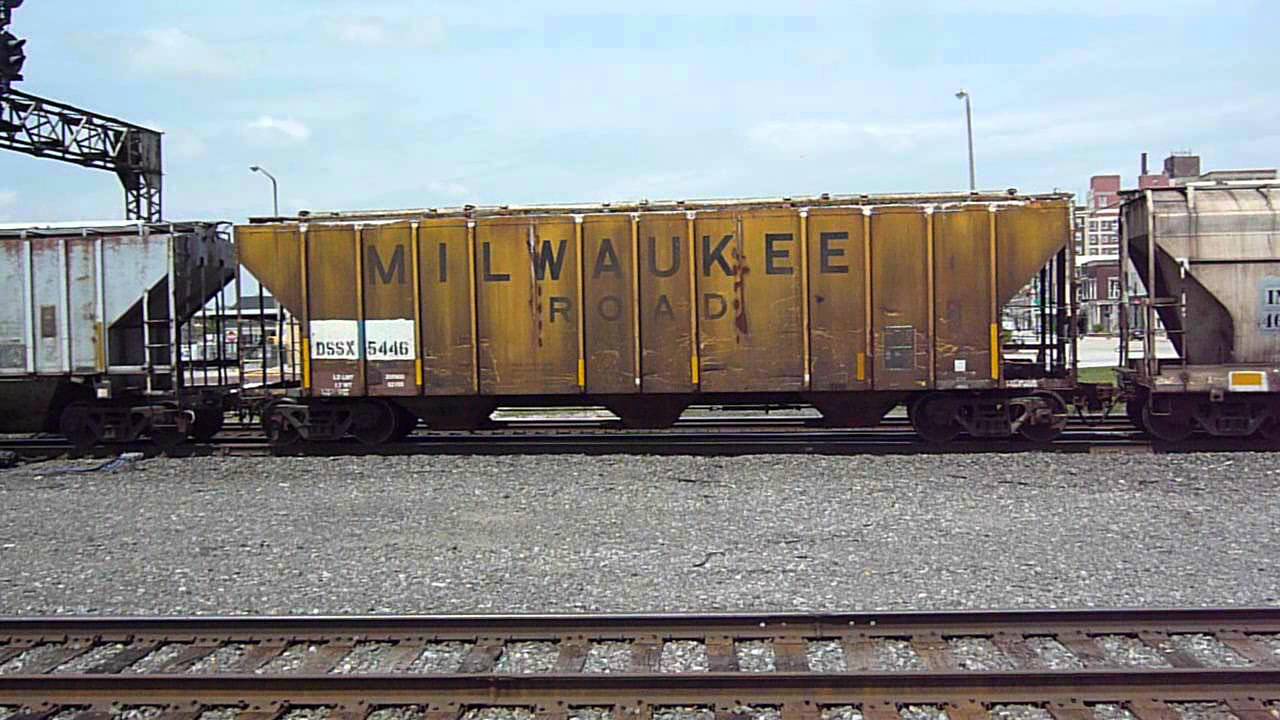Model Information: Micro-Trains introduced this model in March of 2011. It is a model of a Pullman Standard PS-2 3-Bay Covered Hopper 3-Bay with Ribbed High Sides, rated for 100 tons of low-density material.
Prototype History: Like their PS-1 boxcars, PS-5 gondolas and other car designs, Pullman Standard applied the PS-2 classification to all of its covered hoppers. Pullman Standard built covered hoppers in many sizes and configurations. But say “PS-2” to railfans and it is this particular car that usually first comes to mind. The 2003 cubic foot car was one of the first, smallest and prolific of the PS-2 cars.
Pullman began building its standardized freight car designs with the PS-1 boxcar in 1947. Next up would be a standard covered hopper – hence PS-2 – shortly thereafter. Although covered hoppers are among the most common cars on the rails today, in 1947 they were a rarity. The PS-2’s primary competition wasn’t other covered hopper designs but boxcars. Grain, cement, sand and dried chemicals were carried mostly in boxcars prior to the 1950s either in sacks and bags or poured in bulk through hatches in the roof. The theory here was that it made more sense to utilize a single car for a variety of products. The car could carry bags of cement one way and then cut lumber the other. Of course a car that could do many things often couldn’t do many of them well.
Pullman began building its standardized freight car designs with the PS-1 boxcar in 1947. Next up would be a standard covered hopper – hence PS-2 – shortly thereafter. Although covered hoppers are among the most common cars on the rails today, in 1947 they were a rarity. The PS-2’s primary competition wasn’t other covered hopper designs but boxcars. Grain, cement, sand and dried chemicals were carried mostly in boxcars prior to the 1950s either in sacks and bags or poured in bulk through hatches in the roof. The theory here was that it made more sense to utilize a single car for a variety of products. The car could carry bags of cement one way and then cut lumber the other. Of course a car that could do many things often couldn’t do many of them well.
Road Name History: 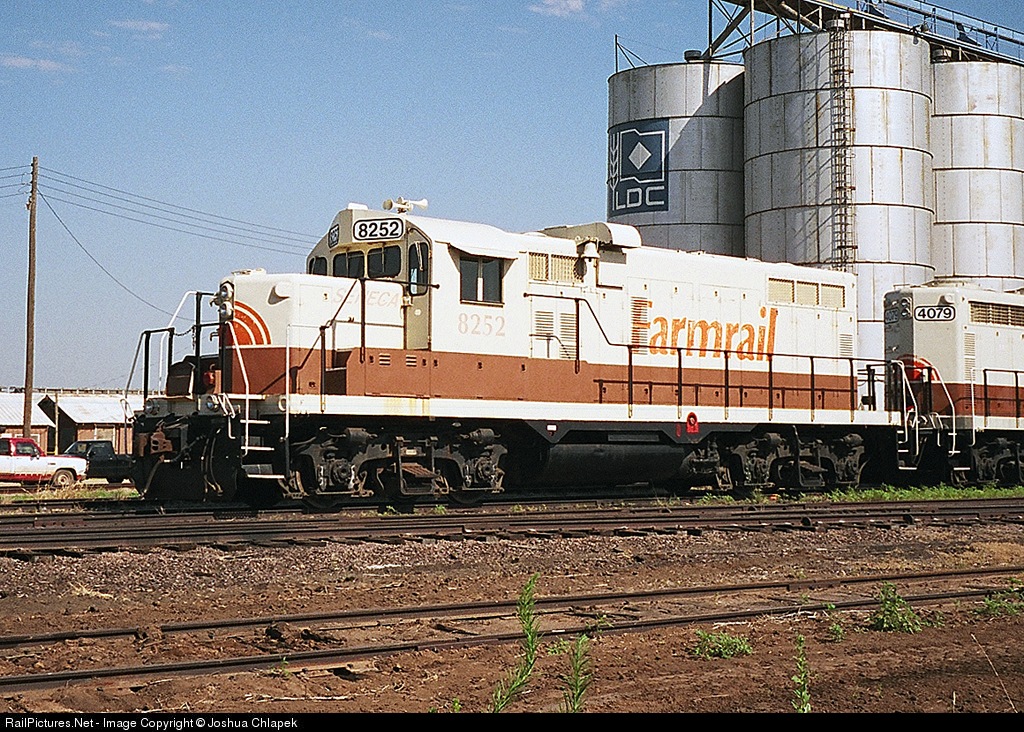 Farmrail is one of several lines to be born from the 1980 shutdown of Rock Island. Beginning operations in 1981, Farmrail has a “t” shaped system running from Erick to Weatherford on one axis and Westhorn to Elmer on the other with the junction in Clinton, all in western Oklahoma. The total mileage is 186 (putting it between Columbus & Greenville and Bessemer & Lake Erie in relative size.) The Erick to Weatherford line is owned by the Oklahoma DOT with Farmrail being the designated operator.
Farmrail is one of several lines to be born from the 1980 shutdown of Rock Island. Beginning operations in 1981, Farmrail has a “t” shaped system running from Erick to Weatherford on one axis and Westhorn to Elmer on the other with the junction in Clinton, all in western Oklahoma. The total mileage is 186 (putting it between Columbus & Greenville and Bessemer & Lake Erie in relative size.) The Erick to Weatherford line is owned by the Oklahoma DOT with Farmrail being the designated operator.
They run the line with one SW7, one GP7, four GP9’s, and eight GP10’s. All geeps have had their short hoods lowered and carry a paint scheme that would be right at home on a carton of eggs. Nearly all of the units are named after Native-American tribes. Farmrail’s sister railroad Grainbelt runs parallel to the Westhorn – Elmer line but to the east. In recent years, Farmrail and Grainbelt have been picking up used GP38’s (in a couple of varieties) to help with heavier trains. Traffic supporting the oil business has either been substantial or absent – depending on the market price for crude at any given time.

They run the line with one SW7, one GP7, four GP9’s, and eight GP10’s. All geeps have had their short hoods lowered and carry a paint scheme that would be right at home on a carton of eggs. Nearly all of the units are named after Native-American tribes. Farmrail’s sister railroad Grainbelt runs parallel to the Westhorn – Elmer line but to the east. In recent years, Farmrail and Grainbelt have been picking up used GP38’s (in a couple of varieties) to help with heavier trains. Traffic supporting the oil business has either been substantial or absent – depending on the market price for crude at any given time.
Brand/Importer Information: Micro-Trains is the brand name used by both Kadee Quality Products and Micro-Trains Line. For a history of the relationship between the brand and the two companies, please consult our Micro-Trains Collector's Guide.
Manufacturer Information:  Micro-Trains Line split off from Kadee Quality Products in 1990. Kadee Quality Products originally got involved in N-Scale by producing a scaled-down version of their successful HO Magne-Matic knuckle coupler system. This coupler was superior to the ubiquitous 'Rapido' style coupler due to two primary factors: superior realistic appearance and the ability to automatically uncouple when stopped over a magnet embedded in a section of track. The success of these couplers in N-Scale quickly translated to the production of trucks, wheels and in 1972 a release of ready-to-run box cars.
Micro-Trains Line split off from Kadee Quality Products in 1990. Kadee Quality Products originally got involved in N-Scale by producing a scaled-down version of their successful HO Magne-Matic knuckle coupler system. This coupler was superior to the ubiquitous 'Rapido' style coupler due to two primary factors: superior realistic appearance and the ability to automatically uncouple when stopped over a magnet embedded in a section of track. The success of these couplers in N-Scale quickly translated to the production of trucks, wheels and in 1972 a release of ready-to-run box cars.
Micro-Trains Line Co. split off from Kadee in 1990 to form a completely independent company. For this reason, products from this company can appear with labels from both enterprises. Due to the nature of production idiosyncrasies and various random factors, the rolling stock from Micro-Trains can have all sorts of interesting variations in both their packaging as well as the products themselves. When acquiring an MTL product it is very important to understand these important production variations that can greatly enhance (or decrease) the value of your purchase.
Please consult our Micro-Trains Collector's Guide

Micro-Trains Line Co. split off from Kadee in 1990 to form a completely independent company. For this reason, products from this company can appear with labels from both enterprises. Due to the nature of production idiosyncrasies and various random factors, the rolling stock from Micro-Trains can have all sorts of interesting variations in both their packaging as well as the products themselves. When acquiring an MTL product it is very important to understand these important production variations that can greatly enhance (or decrease) the value of your purchase.
Please consult our Micro-Trains Collector's Guide
Item created by: Lethe on 2015-05-31 17:46:30. Last edited by George on 2024-01-26 20:28:50
If you see errors or missing data in this entry, please feel free to log in and edit it. Anyone with a Gmail account can log in instantly.
If you see errors or missing data in this entry, please feel free to log in and edit it. Anyone with a Gmail account can log in instantly.


